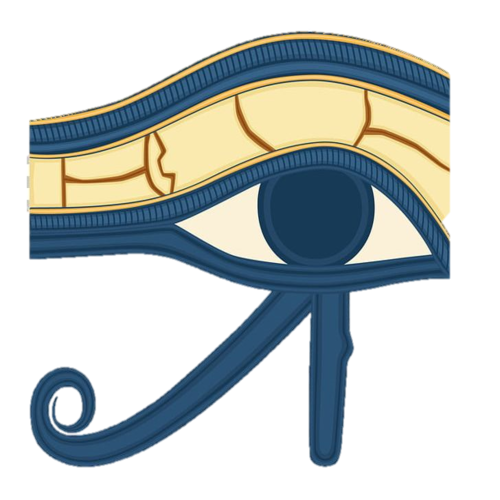| Preceded by: Amenemhat IV |
Pharaoh of Egypt 12th Dynasty |
Succeeded by: Sobekhotep I | |
| Sobekneferu | |||
|---|---|---|---|
| Neferusobek | |||

| |||
| Reign | 1806-1802 BC (3 years, 10 months, and 24 days) | ||
| Praenomen | Kasobekre The Soul of Sobek-Re | ||
| Nomen | Sobekneferu Beauty of Sobek | ||
| Horus name | Meritre Beloved of Re | ||
| Nebty name | Sitsekhem-Nebettawy Daughter of the Powerful One, Mistress of the Two Lands | ||
| Golden Horus | Djedetkhau Stable of Appearances | ||
| Father | Amenemhat III | ||
| Consort(s) | Amenemhat IV (?) | ||
| Died | 1802 BC | ||
| Burial | Northern Mazghuna pyramid | ||
Kasobekre Sobekneferu, sometimes written as Neferusobek (transliteration: sbk-nfr.w, meaning: "Beauty of Sobek"), was a female pharaoh and the last ruler of the Twelfth Dynasty during the Middle Kingdom. Some scholars believe that she was the daughter of Pharaoh Amenemhat III and Manetho states that she was the sister of Amenemhat IV. She is the first female ruler of Egypt to have all her names and titles preserved, but Nitocris may have ruled in the Sixth Dynasty.
Amenemhat IV most likely died without a male heir. Consequently, Amenemhat III's daughter Sobekneferu assumed the throne. According to the Turin Canon, she ruled Egypt for 3 years 10 months and 24 days. The end of her reign also concluded the Twelfth dynasty and inaugurated the beginning of the Thirteenth Dynasty of Egypt.
Reign[]
She was known from many monuments, though several of her (headless) statues survived from Khatana. (These have now disappeared, possibly stolen.) See L. Habachi, including the base of a king's daughter with her name that was discovered in Gezer.[1] She also made additions to the funerary complex of Amenemhat III at Hawara (called a labyrinth by Herodotus) and built at Herakleopolis Magna while a fine cylinder seal bearing her name and royal titulary is now located in the British Museum.[2] A Nile graffito, at the Nubian fortress of Kumma records the Nile inundation height of 1.83 metres in Year 3 of her reign.[3] Her monumental works consistently associate her with Amenemhat III rather than Amenemhat IV, supporting the theory that she was Amenhotep III's daughter and was perhaps only a step-sister of Amenemhat IV.[4] Kim Ryholt notes that the contemporary sources from her reign show that she never adopted the title of "Queen or King's sister"--only 'King's daughter'--which supports this hypothesis.[5] The reason why she would not have called herself 'King's sister' would be because at that time the king who was her brother would have had to be alive, and obviously this was not the case. The princess, Neferu-Ptah. daughter of Amenemhat III, was the only one who had ever used that title up until that time.
Contrary to the general view, Hatshepsut was not the first female pharaoh who called herself "Son of Re", as male kings did: Sebekneferu also used this title and a damaged statue in the Louvre shows her with a male kilt on top of her female dress. She too wore a male headdress.[6]
Her tomb has not been positively identified, though she may have been interred in an uninscribed pyramid complex in Mazghuna, immediately north of a similar complex ascribed to Amenemhat IV. In a papyrus found at Harageh, a place called Sekhem-Neferu is mentioned. This is perhaps the name of her pyramid.
For discussion on all the known records from this queen's time see V.G. Callender, 'Materials for the Reign of Sebekneferu' in Proceedings of the Seventh International Congress of Egyptologists. Cambridge, 3-9 September 1995 [ed. C.J. Eyre]. Peeters, Leuven (1998), p.227-236.
References[]
- ↑ Ryholt 1997, p. 213.
- ↑ Gae Callender, 'The Middle Kingdom Renaissance' in Ian Shaw, The Oxford History of Ancient Egypt, (Oxford Univ. Press: 2003), paperback, p.159
- ↑ Gae Callender, op. cit., p. 159.
- ↑ Ryholt, op. cit., p. 213.
- ↑ Ryholt, op. cit., p. 213.
- ↑ Callender, 'What sex was Sebekneferu and what do we know about her reign?’, KMT 9, pp.24 - 30.
Bibliography[]
- Callender, Vivienne G. 1998. 'Materials for the Reign of Sebekneferu' in "Proceedings of the Seventh International Congress of Egyptologists. Cambridge, 3-9 September 1995" [ed. C.J. Eyre]. Peeters, Leuven, p.227-236.
- Dodson, A./Hilton, D., 2004: The Complete Royal Families of Ancient Egypt. Thames & Hudson, London.
- Grajetzki, W., 2006: The Middle Kingdom of Ancient Egypt: History, Archaeology and Society. Duckworth, London.
- Ryholt, K., 1997: The Political Situation in Egypt during the Second Intermediate Period c.1800-1550 B.C. Museum Tuscalanum Press.
- Shaw, Ian. Nicholson, Paul. 1995. The Dictionary of Ancient Egypt. Harry N. Abrams, Inc., Publishers.
- Shaw, Ian, Ed. 2000. The Oxford History of Ancient Egypt, Oxford University Press. Graffito ref. pg. 170.
External links[]
- "Sobekneferu: The First certain Royal Queen of Egypt". touregypt.net.
| Predecessor: Amenemhat IV |
Pharaoh of Egypt 12th Dynasty |
Successor: Sobekhotep I |
